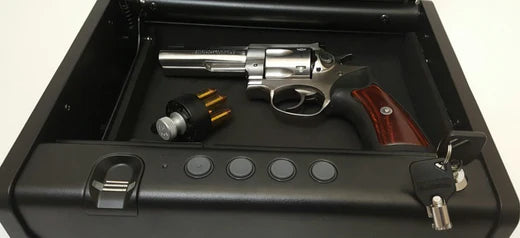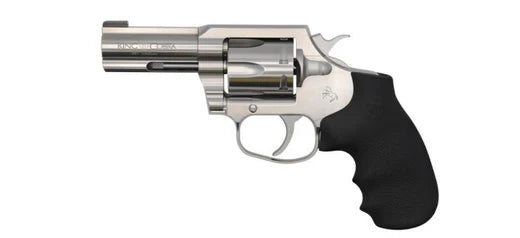You know that sinking feeling you get when you lose your keys?
A few years back, I went on a weekend “bug out” camping trip with a group of friends to test out new gear, train, and get nature time. I had no idea how glad I was going to be that I knew how to pick a lock.
Coming home on Sunday night, I was excited to get back to my bed and finally get some rest.
As I prepared to enter my apartment, I rummaged through my BOB only to realize that my keys were missing.
Although untrained in the art of lock picking, I had a set of picks in my bug out bag and was excited to put it to use. After an hour of maneuvering, I finally got the door open and avoided paying hundreds of dollars to a locksmith, or having my mom drive out an hour to drop off the spare set of keys.
If I had any level of training, that lock could have been picked in mere minutes (if not seconds) and saved me time as well. Now that I opened my first lock, I had the bug to learn more.
Lock picking can be a fun hobby.
If you like puzzles then you may find that lock picking can provide you with a lot of amusement. A lot of people enjoy picking locks just for fun.
In today's post, I go over the 3 step process that I learned to open most conventional locks.
DISCLAIMER: Before you start picking locks, you have to understand that this information is not intended for illegal activity. Lock picking itself can be a crime in certain places in the world, but more than anything, you should never use this skill to undermine someone’s home security measures. You need to follow the two rules of lock picking.
Never pick a lock you do not own or have not been given express permission to pick by the owner.
Do not pick locks that are in use. (A lock can be damaged by repeated picking).
If you can follow those rules, you just need to know how a lock works, and then you can get onto finding out how to pick a lock.
How Standard Locks Work
There are many different types of locks in use today, but the most common one you will encounter use a pin tumbler system. Most homes have deadbolts, common padlocks, and keyed knob sets, that use pin tumbler lock cores. The core of a lock is comprised of two sections.

Anatomy of a lock. Picture courtesy of art-of-lockpicking.com[/caption]
The first section of a lock core is “the plug”. This is the part of the lock that you insert the key into. The plug will rotate when the correct key is inserted, actuating a bolt or latch so that the device unlocks.
The rotation of the plug turns a tailpiece or cam on the back of the lock core, which controls locking and unlocking. If the plug does not rotate the correct way or does not rotate at all, the lock will not open.
Within the plug, there are pins stacked on top of each other. The lowest pins in the stack that the key will touch are called “key pins”. On top of those are the driver pins. These stacks are tensioned by the downward pressure of springs that rest on the driver pins.
The driver pins need to be elevated out of the plug (compressing the springs above them) and into the second part of the lock core, “the bible”. The bible is the housing that holds the plug, the gap that separates the two (allowing the plug to turn) is called “the shear line”.
When the proper key is placed in the lock, the pins stacks will rise so that the driver pins are in the bible, and the key pins remain in the plug. Each will pin type will be above or below the shear line, respectively. If the key is not right, the pins will not be elevated to the proper height and pins will not clear the shear line and this will keep the plug from rotating.
Basics of Lock Manipulation
Based on what you now know about very basic lock mechanics, you can understand how to pick a lock. You know that you have to elevate these pin stacks so that the driver pins rest above the shear line and the key pins remain in the plug (below in the shear line).
Step 1: Tension the Lock
By using a tool called a “tension wrench” you must apply torque to the plug of the lock, forcing the pins stacks to be under tension. Make sure you are tensioning in the right direction (the way you would rotate a key to open the lock) because if the lock is picked in the wrong way, it will not open.
You can increase or lessen the amount of tension you are applying, but do not remove it entirely. If you release tension at any moment, you will need to start over.
Step 2: Insert Your Lock Pick
With the lock under tension, you will insert your pick and try to raise the pin stacks one by one. Find the binding pin that needs the most force to be lifted up. Because there is no way to mill perfectly aligned pin chambers into a lock core, certain pins will become hung up on the shear line and hold there so that each pin stack can be elevated individually. This is like a key working in slow motion.
Step 3: Pick The Lock
When you find a pin that is not springy, push it up gently until you feel a small click and get a bit of rotation with the plug. Find the next binding pin and repeat. Most locks will have 5 pin stacks, but some have 6 or 7. Once all the pins are at the shear line, the plug can be turned with the tension wrench.
How To Pick Locks The Easy Way
The process I described in the manipulation section is single pin picking (as each pin is addressed individually and manipulated one at a time). This is the foundational type of lock picking and is the most effective because it demonstrates an understanding of what is happening inside the lock.
The ability you are refining with something as methodical and complex as single pin picking (SPP) can be applied to pick even the most complicated locks. But if you are just starting out, you can use a much simpler method to pick locks.
I would recommend that beginners to lock picking start by raking locks open. Raking is a more popular method because it is easier to learn, and works faster for beginners. It really only works with low-security locks, but it does work. Essentially, you just experiment with tension as you randomly move a lock pick up and down it the keyway. You are trying to move all the pins indiscriminately, hoping to open the lock by chance. You will need a lock pick that is a “rake”.
Lock picking tools that are considered “rakes” have a different profile to picks that are meant for SPP. A rake is most distinguishable by the grooved pattern down the blade of the pick. Where an SPP pick will have one protrusion or shape to interact with one pin at a time. A rake will have several grooves. This is very similar to items such as bump keys and jiggle keys that have one profile that can manipulate many locks. However, rakes should not be confused with skeleton keys.

Consult With Survival Pros
For Those Serious About Their Family's Life-Assurance Plan (and Not Just Life Insurance)
Learn MoreRakes still need finesse in order to work. And even more importantly, they do not always work. In the case of high-security locks, there will be too much luck required to rely upon the effectiveness of such a chaotic lock picking method. But this process is possible with many popular locks. Essentially, you will be likely to open up almost any lock you can get at your local hardware store with this method. Only certain specialty products that advertise things such as picking and bump key resistance will have the proper internals to prevent lock bumping.
When Lock Picking Gets Complicated
High-security locks use variations on the lock mechanics that I have described so far in order to increase the difficulty of covert entry methods, such as lock picking. In systems that still use the pin tumbler model, they will add security pins. These pins have been ground down into certain shapes that cause them to catch on the shear line. If you are picking a lock, it will seem as though the pins have set, but this is actually something called a false set.
In a false set, you have caused the security pins to bind at the shear line. They have clicked and there has been a bit of rotation on the plug. But the driver pin has not cleared the shear line. Picking something like this requires a lot more finesse. You are struggling to understand what is happening inside the lock without any visual signs of what the issue is. This is where general knowledge about lock manufacturers and model numbers will be beneficial. If you know that a certain type of brand is likely to use spool pins, or serrate their pin chambers, you will not be picking the lock entirely blind.

Example of a double wafer lock
More complicated than security pins, locks can use different internal setups. The locks used for common car security, for
example, are commonly slider and double wafer locks. These types of locks can be picked with standard picks, and some wafer locks can even be raked open.
However, if you cannot rake the lock, what you are trying to accomplish inside the keyway is not as straightforward as a pin tumbler. As soon as you need to understand your goal of movement inside the keyway, the difficulty changes.
The concept of attempting to move the pick to act as the key in slow motion, while applying tension will always be necessary, but how to pick these lock specifically would require articles all their own.

Example of a Dimple Lock Key
The most high-security door locks experiment with pin tumbler variations, such as dimple locks.
These locks can get as complicated as the Mul-T-Lock MT5+ core, which uses sidebars, active elements, pin in pin security pins, and pin stacks on two sides of the keyway. The more complex the system, the more you need to know in order to manipulate all of its elements.
Then you have something like a disk detainer lock, which requires rotation and not elevation. And with something like the Abloy Protec series, false gates on the rotating disks are meant to bewilder any lock picker as to what is happening in the lock.

Exclusive Survival Gear Deals
Access survival equipment we’ve fully tested so we can recommend it to you.
Important Things to Know
- Tension is the most difficult part of the process to get right. Each lock will require a different amount. Experiment with light, medium, and heavy tension. Troubleshoot this during the picking process by feeling for how pins are binding. If they are all bound up and not moving, decrease tension. If they are all springy, increase tension.
- Lock picks are a valuable addition to your survival kit. In desperate situations, people can attempt to lock up your supplies or shelter as a way of claiming them illegally. You can also be held against your will. Getting into your shelter or vehicle, if you have lost the keys, might also be a necessity.
- You should invest in one of the best locks for lock pickers. These are locks intended to allow learning without discouraging continued interest in the hobby. Lock picking is a perishable skill, and if you do not practice, you will not retain your level of picking fluency. Make sure that you are constantly keeping your skills sharp by practicing lock picking on a reliable schedule. It is also important to start with practice locks that give you a good sense of the most likely locks to encounter, as they are often easy to pick and allow you to get a sense of the real world applications of lock picking.
Conclusion
Do not use any of this knowledge for illegal activity. Lock picking is a hobby for upstanding members of society who are interested in finding out more about how the security of the real world really works.
It is important that you understand how a lock works before you begin picking. This is not to say that you cannot pick a lock to find out more, but some foundation of knowledge is important to the success of learning how to pick a lock.
The best beginner technique for lock picking is raking. You will need low-security locks for this technique to work reliably. As locks become higher-security, they become more complex. In becoming more complex, they require refined skills to pick open. The more secure a lock is, the fewer ways there are to open it.
And remember, ANY lock can be picked. You just need to know how to pick the lock.
Faq
Here is an example of a set you can buy on Amazon. It includes a few practice locks that allow you to see what you are doing so you can gain skills. Cost of kits varies. Try to pick a set that is at least mid priced. You don’t want to try to learn a new intricate skill with tools and practice locks that are poor quality.
Lockpick World offers some high quality products.
Some damage is done every time a lock is picked. It is not likely that a lock will not work at all after being picked just a few times. Experts, including law enforcement forensic techs, can tell if a lock has been picked
The more you practice the better you will get. That being said, there are some people that pick up the skill faster than others. Patience and a steady hand help a lot. Some locks may be harder for you to pick than others.



![How to Pick a Lock in 3 Easy Steps [Guide + Videos]](http://readytogosurvival.com/cdn/shop/articles/how-to-pick-a-lock-featured-image_520x500_43c23c78-24ca-4561-a1a0-6d925711455a_{width}x.webp?v=1722583735)



























Leave a comment